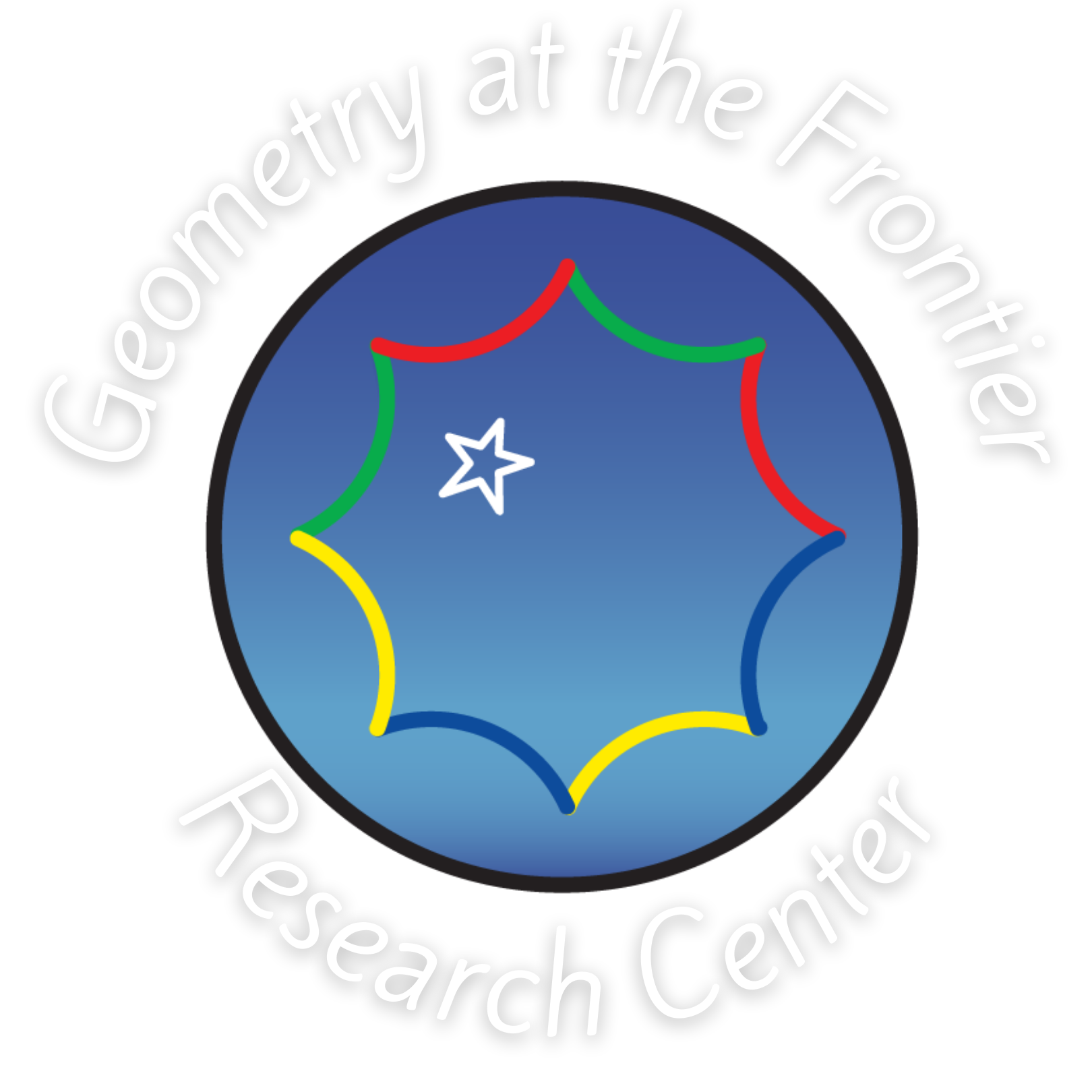Research areas
We address current challenges in the field of complex geometry
Our Research Center Geometry at the Frontier is composed of a team of researchers of recognized national and international prestige. Its five main research areas are:
1.- Abelian Varieties
2.- Complex Arithmetic Dynamics
3.- Differential Geometry
4.- K3 Surfaces
5.- Riemann Surfaces

Abelian Varieties
Projective varieties which are complete and have a group structure are called abelian varieties. Examples of Abelian varieties are Jacobians varieties (of compact Riemann surfaces), Prym varieties and K3 surfaces. The action of a finite group on an abelian variety induces an isogeny decomposition of it into abelian subvarieties of lower dimension. This decomposition is strongly based on the irreducible representations of the group. Our research interest is the study of group actions on abelian varieties with emphasis in the properties of the different representations induced by the action of the group on relevant geometric objects.

Complex Arithmetic Dynamics
In the case our Riemann surface is the Riemann sphere, interesting objects of study are the dynamics of iteration of rational maps. Each rational map has associated an arithmetic invariant, called its field of moduli (FOM). The field of moduli is known to be a field of definition (FOD) for rational maps of even degree or equivalent to polynomials (J. Silverman). In the case of odd degree map, this is not the case, but members of the group has observed that there is always a field of definition being a quadratic extension of the field of moduli. Our group is interested in understanding this FOD/FOM problem and, for instance, to describe Galois orbits of rational maps.

Differential Geometry
Symmetries in differential geometry appear in two ways: infinitesimally or globally. Infinitesimal symmetries play a central role in the study of distributions of k-planes, and thus, are ubiquitous as problems ranging from smooth foliations to geometric control theory are directly related to the holonomy nature of their defining distributions of k-planes. To study these symmetries we use Lie-algebraic tools. On the other hand, global symmetries of a differential system can be encoded in terms of additional geometric structures, sometimes induced by different types of metrics, through differential forms, etc. Global symmetries naturally induce infinitesimal symmetries, while the latter ones –although conceptually simpler– seldom yield global information.

K3 Surfaces
K3 surfaces are beautiful geometric objects with very rich geometry. This is the reason why they are an interesting and actual topic of research in algebraic geometry. In particular the study of their automorphisms is a powerful tool in order to understand the geometry of these surfaces. In our group, we investigate K3 surfaces admitting symplectic automorphisms, i.e. automorphisms whose action on the holomorphic 2-form is trivial, as well as non-symplectic ones. We study their invariants and their moduli spaces. We are also interested in the natural generalizations of K3 surfaces in higher dimension, such as irreducible holomorphic symplectic varieties or Calabi-Yau varieties, and their automorphism groups.

Riemann Surfaces
This area focuses on the study of symmetries, uniformizations and algebraic aspects of (usually compact) one-dimensional complex manifolds (Riemann surfaces). Very few of these objects possess non-trivial symmetries, and these provide the singular locus in moduli spaces. Compact Riemann surfaces can also be described by complex algebraic curves and, sometimes, these curves are defined over the field of algebraic numbers; these correspond to Grothendieck’s dessins d’enfants and Belyi curves.
Thus one of the most important problems our group study is the construction of families of examples displaying several desirable properties. We often encode these features through various algebraic invariants from the algebro-geometric, group-theoretic or combinatorial toolboxes. We are also interested in describing minimal degree extensions of fields of definitions of the corresponding field of moduli of closed Riemann surfaces and, in particular, to study new Galois invariants for the case of dessins d’enfants.
